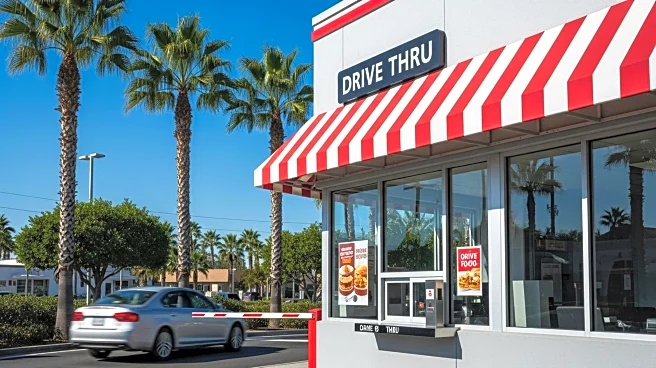What is the story about?
What's Happening?
Grocery stores are experiencing an increase in sales of prepared meals as consumers seek convenient dining options. According to a report by the Food Marketing Institute, purchases of grocery foodservice and prepared foods reached $19.6 billion in the 52 weeks ending August 9, marking a 3.7% increase from the previous year. Fully cooked meat led the category with a 4.5% rise in dollar sales and an 8.1% increase in unit sales. Pizza and olives/marinated vegetables also showed strong sales growth. The trend is driven by consumers looking for alternatives to dining out, with 64% of households purchasing prepared foods from grocery stores at least once during the period.
Why It's Important?
The shift towards grocery-prepared meals reflects changing consumer preferences for convenience and cost-effectiveness. As fast-food prices rise, more shoppers are opting for grocery store options, which offer a blend of prepared and home-cooked meals. This trend is significant for the grocery industry, as it positions supermarkets as competitors to restaurants for consumer dining choices. The increase in prepared meal sales suggests a potential long-term change in consumer behavior, impacting restaurant sales and prompting grocery stores to expand their offerings to meet diverse dietary preferences.
What's Next?
Grocery stores are likely to continue expanding their prepared meal options, focusing on healthier choices and diverse cuisines to attract more customers. As the demand for convenience grows, supermarkets may invest in marketing strategies to further position themselves as viable alternatives to dining out. The industry could see increased competition among grocery chains to offer unique and high-quality prepared meals, potentially leading to innovations in foodservice offerings.
Beyond the Headlines
The rise in grocery-prepared meal sales may have broader implications for food waste management, as stores aim to balance supply with demand to minimize shrinkage. Additionally, this trend could influence the food supply chain, with increased demand for ingredients used in prepared meals. The shift may also impact employment in the restaurant industry, as consumers opt for grocery options over dining out.
AI Generated Content
Do you find this article useful?













